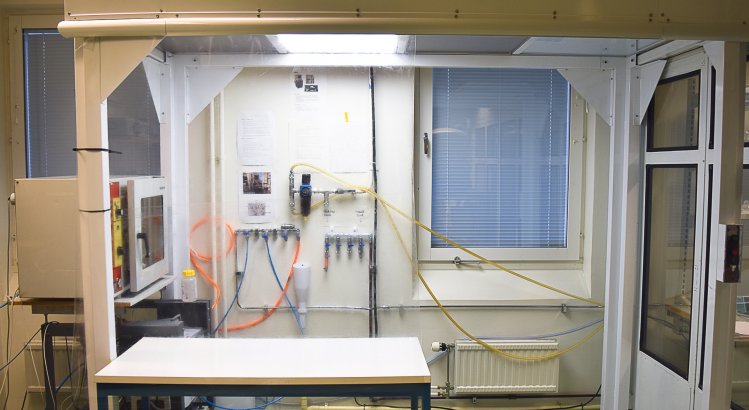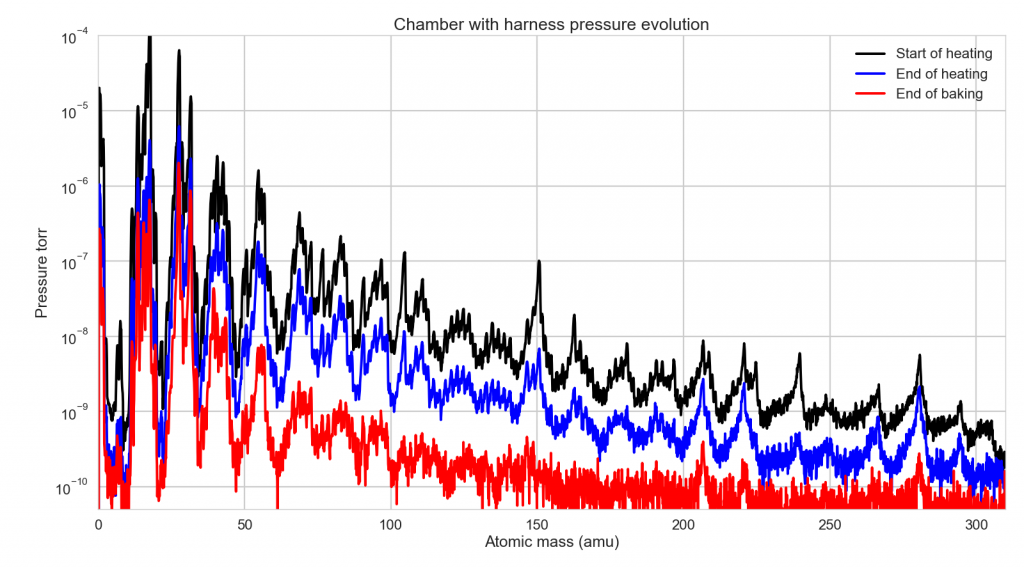
Vacuum Oven
Technical specifications
| Manufacturer | Heraeus |
| Type | VT 5042 EK |
| Max nominal temperature | +250°C |
| Power | 1.35 kW |
| Inner dimension | 36 x 34 x 41 cm |
| Vacuum | 3·10-7 mbar |
The vacuum oven is used for bake out of equipment, such as mechanical parts, harnesses, whole subsystems or instruments.
By heating such critical parts in a vacuum environment all volatile species boil off. This is a way of cleaning the equipment on a deeper level.
For example water trapped within PCB materials or other plastics are boiled off during bake out. The same procedure is used when curing paints and increase the bonding to a base material.
Before delivery of a space instrument all equipment and parts are baked out to ensure the highest level of cleanliness. Before installing PCBs into the inner parts of the instruments, these are also baked out to ensure that no unwanted contamination can gas out inside the instrument, which could cause electric discharges.
On a mission with several payloads, unwanted contamination from one instrument can lead to damage, malfunction, and failing of other instruments.
The oven is equipped with a residual gas analyser (RGA), which shows the species (in terms of mass) that are present in the air pumped out from the chamber. The RGA allows to compare the composition of the air just as the bake out is started to the measurements taken just as the bake out is completed.
The graph shows a comparison of the RGA measurements during a test of harness for the Jovian plasma dynamics and composition (JDC) analyser. This harness was baked out to ensure its cleanliness before installing it inside the JUICE spacecraft.
As can be seen, the amount of material present in the pumped out air significantly decreased between the start and end of baking. After bakeout the equipment is stored in controlled environments, such as desiccators or nitrogen flushed boxes.

Photos: Philipp Wittmann, IRF
